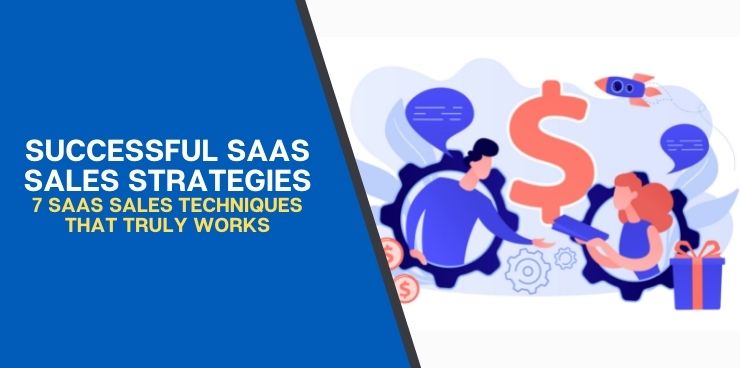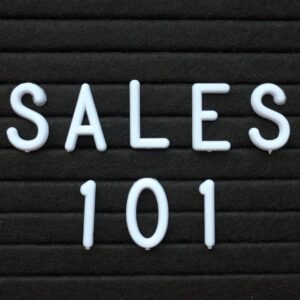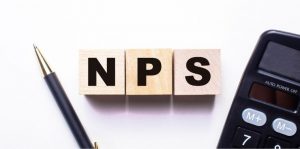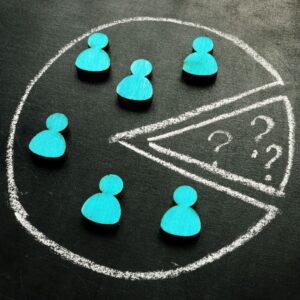The future is bright for those in the SaaS sales game. Its continued growth and generous compensation plans give B2B professionals plenty of opportunities to build long-lasting and lucrative careers.
As an ongoing service, SaaS sales and its customer relationship models are unique in how salespeople manage them. For even seasoned professionals, the metrics, sales cycles, and methodologies in the SaaS niche require new perspectives and approaches.
This guide will explore SaaS and how it differs from traditional product and service sales. We will break down seven key SaaS sales techniques to boost your close rates and customer lifetime value.
What are SaaS Sales?
Software-as-a-service (SaaS) sales refer to selling any software that is accessed online through a portal or website. Software providers give users a platform, security and ongoing support in a customizable service offering. By offering software like this, businesses can easily provide scalable updates, integrations, and product upgrades.
Like any B2B product or service, SaaS is designed to solve unique and evolving business problems. SaaS sales demand a consultative approach, where the sales rep focuses on customer service and ongoing care. Since software sales in this model are usually subscription-based, customer value is heavily tied to post-sale support.
For the customer, SaaS investments are expensive. Software solutions are big-ticket items, selling initially at a higher price and building long-term costs due to renewals. The sales representative needs to be committed to delivering value, customizing solutions, and remaining responsive to earn business.
What is the Difference Between Selling SaaS and Selling Other Products or Services?
High cost and complexity are the key hallmarks of SaaS solutions. Compared to traditional sales, SaaS sales cycles are longer and customer interaction needs to be frequent and highly productive.
There are usually multiple decision-makers involved because the investment is both expensive and elaborate. Sales and marketing have to tightly coordinate during the lengthy sales process to build value that closes deals. Because of the involvement in a sale, there are unique characteristics of SaaS worth understanding.
 Education
Education
Due to their complexity, salespeople need to be thoroughly educated on their products’ functionality, features, and integration capabilities. Competition is stiff in SaaS, so more technical knowledge often equates to winning sales.
SaaS managers and reps often come from tech backgrounds. It is common to pair salespeople with engineers and creatives to help educate customers. Doing so allows salespeople to accurately and concisely communicate benefits relevant to the prospect’s problem.
Customizability
The long sales cycle and high costs of SaaS mean that the salesperson has more to lose. Salespeople are much more likely to go out of their way to have multiple face-to-face conversations to find unique solutions.
There is far more interaction between the prospect and the sales and marketing team. Businesses will spend more money to provide more value to their customers when they can.
That value also generally entails more customizability. SaaS products need to work among a curated collection of software tools, so each customer system needs to be fully understood. Sales reps may work with development to fine-tune offerings so they work cohesively with their client’s specific setup.
Renewal
Unlike most product and service sales, web-based software deals are not one-off closes. Most packages are available in a subscription-based renewal model. Customers set up contracts that are revisited at regular intervals, such as every three, six or 12 months.
This is a big difference between the SaaS sales process and traditional cycles. Customer relationship management is crucial for the ongoing sales success of the associate. Salespeople in this role need extensive account management skills to retain their customers and increase their value.
Barriers to entry in the SaaS market are relatively low, so new competition is always popping up. To maintain your market share, you need to continually offer value and adapt to your client’s changing business needs. This means offering upgrades and cross-selling at the right time and customizing current solutions to retain business.
Retaining customers is easier and cheaper than getting new ones. If salespeople continue adding value to keep customers on board, they spend less effort trying to sell. They continue making money from retained customers, allowing them to handle a larger client list and generate more revenue.
Due to the high price and superior expertise needed to succeed in SaaS sales, reps are well-compensated. Compared to traditional sales contexts, SaaS reps average higher base salaries and commissions. Compensation plans vary greatly between companies, but generally, if you plan to enter SaaS, you can expect enormous earning potential.
Some of the Important SaaS Sales Metrics
Measuring sales success is different from a subscription-based model. Costs and revenue occur differently than in a traditional one-time sales situation so accountability requires additional metrics. The following are some of the most useful metrics to track the effectiveness of your SaaS selling team.
Net Promoter Score
The net promoter score (NPS) is useful in SaaS because it helps predict sales through measuring customer loyalty. NPS measures the product and sales experience, gauging customer satisfaction on a scale of 1-10.
Customers who rate their experience positively, between 9-10, are considered promoters. This person is a potential brand ambassador, a loyal follower who will bring repeat business and generate referrals.
If a customer rates between 7-8, they are regarded as passive customers. They are generally satisfied but not enthusiastically tied to your brand. If a competitor’s offering shows greater value, it may not take much for them to move their business elsewhere.
A score between 0-6 indicates a detractor, a dissatisfied customer who will likely continue shopping for alternatives. These customers see poor value in some aspect of the product or experience and may spread negative word-of-mouth.
NPS = Percentage of Promoters – Percentage of Detractors
NPS can range from -100 to 100. A low NPS reveals a high customer turnover rate. High churn from dissatisfied customers will both decrease your earning potential and increase your customer acquisition costs. A high NPS, however, shows that customers are happy and likely to stay loyal.
You can further enhance your NPS insights with qualitative questions. Ask for explanations regarding ratings and how you can improve your service. Those answers will likely reveal deeper problems and patterns to address.
Monthly Recurring Revenue
Keeping on top of predictable revenue is crucial for SaaS sales forecasting and measuring growth. The monthly recurring revenue (MRR) shows the revenue you receive every month based on your client contracts. Showing steady increases is helpful for growing companies looking to inspire investor confidence and accurately plan their business.
Annual Recurring Revenue
Annual recurring revenue (ARR) refers to how much your clients pay each year. Like MRR, reviewing your ARR highlights your business momentum and what it can expect for progress.
Sales Qualified Leads
High potential leads, the sales qualified leads, are those that are ready for salesperson engagement. Through their actions and interactions with marketing, these leads show their immediate interest in solving a problem. Salespeople need to reach out to begin the qualification process, assessing their willingness and ability to invest in solutions.
Lead Velocity Rate
An up-to-date measure of sales growth, lead velocity rate helps businesses predict long-term growth. Although it fails to account for actual sales, the qualified lead generation rate can help you establish sensible goals. When paired with MRR, you can start to gauge your sales team’s effectiveness and perceived value of your solutions.
Revenue per Lead
Measuring how much each lead is worth in revenue can help you understand your sales team’s performance. Monitoring decreases in value as leads increase shows how they can handle a certain workload. This will give you an idea of how to structure your team, understand its needs and formulate training strategies.
SaaS Sales Techniques and Strategies That Work
Now that we know the basics of SaaS sales and the essential metrics let’s look at effective sales techniques. It takes a careful, customer-centric approach to be successful. Salespeople must be attentive to needs and unique circumstances as well as reliable for healthy ongoing relationships.
As you develop your SaaS sales strategy, your organization and team member strengths will likely require a custom angle. The following are the essential principles to involve in the process.
 Find Your Target Customer and Define a Unique Value Proposition
Find Your Target Customer and Define a Unique Value Proposition
Creating buyer personas that define your ideal customer will help you frame your offering. Understanding the problems your customers face can help you magnify the benefits that speak to their relevant needs. Create a unique value proposition that highlights what your software can do to help them accomplish their goals.
Do a Live Setup Call
Acknowledging the complexity of most SaaS solutions, a live setup call is a highly valuable tool in closing prospects. Consultative selling relies on breaking down features and translating them into usable benefits. Setup calls educate prospects, displaying your personalized care and helping them understand your solution’s function in their software stack.
Create a Streamlined Follow-Up Process
Keeping in regular contact with your prospects is critical for the long sales cycle. At the same time, keeping in regular contact with closed clients is critical for recurring contracts. Using CRM and sales automation programs to create a follow-up process is essential to handle that kind of workload.
Salespeople can use a collection of tools to manage and communicate with prospects and clients. A CRM platform can keep you from forgetting clients when it comes to personalized attention. This can be supported with automated emails for nurturing leads and adding ongoing value to clients.
Regular customer contact is essential to maximizing your client list and earning a higher close rate. Creating a software stack of customer management solutions is crucial to your success.
Offer Discounts
Giving a deal to get a longer contract is well worth it in high-profit SaaS deals. Offer products at different contract lengths to give better prices for longer terms.
Customers feel good about getting more value when opting for annual plans instead of monthly or quarterly terms. The salesperson and business benefit from greater revenue and relatively easy customer management.
Develop a Collection of Sales Follow up Templates, Scripts, and Closing Tools
Creating a playbook of effective qualifying, presentation, and closing techniques will help optimize the sales process.
When you know your buyer personas, you can identify their perceptions, values, and needs. That information can help you create email templates and call scripts that resonate. You can add common qualifying questions, objections, and useful closing techniques as well. Any information on your customers or the industry that can further a more efficient sales process should be included.
Leverage a Strong Customer Support System
SaaS customers need to have confidence in the support they receive after purchase. Many decision-makers take stock of customer service ratings to ensure that any difficulties or opportunities are addressed. Customers will stay loyal as they have good support experiences and will provide positive word of mouth.
Strong customer support also generates more useful customer feedback. When customers are encouraged to communicate issues, marketing and product developers have more insight to craft better solutions.
Stay on Top of Key Metrics
Like any B2B sales system, SaaS processes are largely driven by the metrics management uses to track performance. Sales metrics give you room to continually optimize your sales process, sales team training, and even product development. By tracking your individual team members, you can mitigate weaknesses and replicate strengths.
Build Your SaaS Sales Strategy With The Selling Revolution
The SaaS business model will only continue to grow in popularity, offering amazing potential and steeper challenges. Staying ahead of the ever-expanding competition means keying into effective sales and management strategies now.
Our sales experts at The Selling Revolution leverage years of experience and success across numerous industries. We provide a comprehensive evaluation of your unique business needs and goals to create customized solutions. Our goal is to create a sustainable system of growth that delivers results fast and predictably. For more information on how we can help you realize your revenue goals, book an introductory call today.


 Education
Education
 Find Your Target Customer and Define a Unique Value Proposition
Find Your Target Customer and Define a Unique Value Proposition